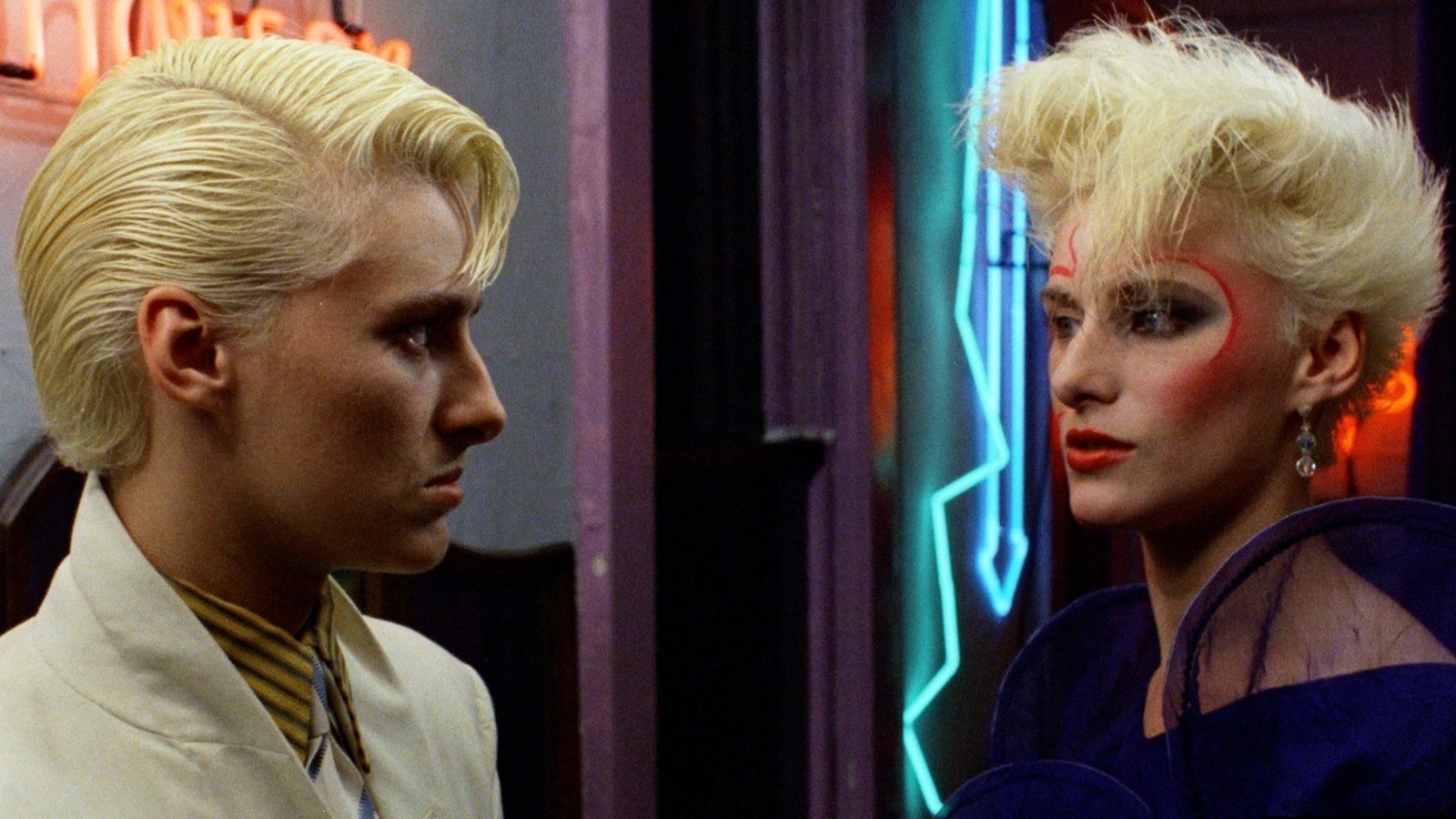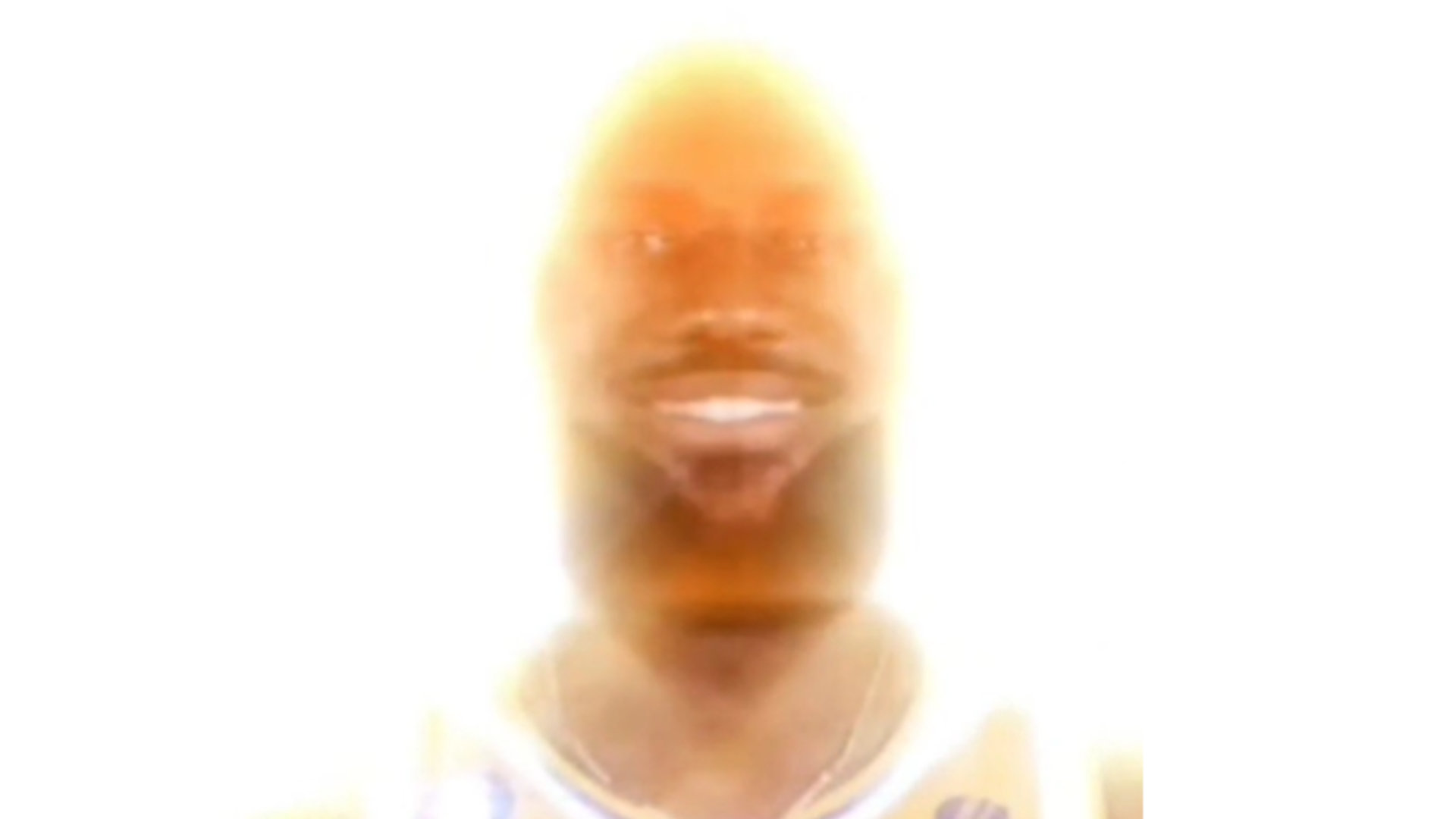
Obscure ’80s Sci-Fi Hidden Gems You Need To Watch Before You Die – Looper
The 1980s were a great time to be a sci-fi fan. From two installments of the original “Star Wars” trilogy, to two installments of the “Back to the Future” trilogy, to all of the best installments of original “Star Trek” films, there was an embarrassment of riches for the genre on the big screen. The ’80s also saw the creation and evolution of some of the most popular subgenres of sci-fi movies, like “Blade Runner” (cyberpunk), “Aliens” (action), “Ghostbusters” (comedy), and “The Thing” (horror).
Given that there were so many hugely popular sci-fi movies in the ’80s, many of which people continue to watch to this day, it’s no wonder that there are plenty of hidden gems that were overlooked at the time. Some were modest enough hits when they were first released, but have since been largely forgotten, as they can’t hold a candle to the fame of some of their peers. So the next time you’re jonesing for ’80s sci-fi, consider some of these under-the-radar cult classics in lieu of watching “E.T.” for the 500th time.
Slipstream (1989)
 Entertainment Film Distributors
Entertainment Film Distributors
Between his time playing Luke Skywalker in the original “Star Wars” trilogy and the sequel trilogy, Mark Hamill’s most high-profile role was voicing the Joker for various “Batman” TV shows and video games. But the actor continued to appear in live-action movies throughout the decades, including another sci-fi film released in the ’80s — albeit one that didn’t take place a long time ago in a galaxy far, far away.
When a Reddit user stumbled upon a picture of Hamill that he had never seen before, he asked Hamill about it on Twitter. Hamill, always one to engage with his fans on social media, responded, “It’s from Slipstream, one of my favorite movies that most people have never seen.” A small but fervent fanbase sings the movie’s praises, the story of a near-future Earth that has been left a barren wasteland due to pollution and natural disasters where bounty hunters battle the police for the right to bring criminals to justice.
If the recommendation of Hamill and his Twitter followers doesn’t convince you to check out this underappreciated 1989 film, how about the fact that it also stars Bill Paxton, F. Murray Abraham, and Ben Kingsley, and was directed by “Tron” director Steven Lisberger?
Le Dernier Combat (1983)
 Patrick Camboulive/Getty Images
Patrick Camboulive/Getty Images
Few people would dispute the fact that “The Fifth Element” is one of the defining sci-fi movies of the 1990s. There is also a growing movement of people going to bat for 2017’s “Valerian and the City of a Thousand Planets,” another sci-fi movie that deserves more attention and praise. Both of those films were written and directed by French filmmaker Luc Besson, and it turns out that he actually has a third sci-fi movie in his filmography that many people believe to be an overlooked gem — and it was actually his directorial debut.
Released in 1983 in his native France, “Le Dernier Combat” — or “The Last Battle” — can easily be enjoyed by anyone, whether they know French or not, as the movie is almost entirely devoid of dialogue. But it’s not just some artsy gimmick, as the story of the film is about a post-apocalyptic world where humanity has lost the ability to speak. As such, the characters don’t have names: They are simply referred to with labels such as Man (the main protagonist, played by Pierre Jolivet), Brute (Jean Reno), and so on.
From his very first movie, Besson was already an extremely innovative and self-assured filmmaker, and “Le Dernier Combat” has aged much better than most film debuts. It’s not at all hard to see why he went on to create multiple hidden gem sci-fi movies over the decades.
Battle Beyond the Stars (1980)
 New World Pictures
New World Pictures
Speaking of early works by future big names, “Battle Beyond the Stars” is well worth tracking down for fans of sci-fi just by virtue of the names behind it. For starters, it’s one of the first films to be written by John Sayles, the future best original screenplay Oscar nominee for “Passion Fish” and “Lone Star.” It was only the second movie to be scored by the late James Horner, an Oscar-winning composer whose work includes “Aliens,” Star Trek II: The Wrath of Khan,” and “Avatar.” And the art direction and special effects featured a rising talent by the name of James Cameron, who soon built an entire career out of reinventing the sci-fi genre several times over.
Impressive pedigree aside, “Battle Beyond the Stars” is an ambitious sci-fi fantasy adventure about space cowboys, barbarian armies, and alien clones that both calls back to the campy adventures of the ’50s and ’60s and also hints at the future of the genre. It was also produced by Roger Corman and feels very much like a movie that was produced by Roger Corman, but he is called the “King of Cult” for a reason — he definitely has a knack for creating or at least attaching himself to movies that are often written off when they’re first released, but are much more appreciated when looked back on years later.
Liquid Sky (1982)
 Vinegar Syndrome
Vinegar Syndrome
The New Wave/Post-Post Punk aesthetic of the 1980s that was most prominent in music, fashion, and hair salons also found itself a compelling bedfellow in sci-fi. This was most prominently illustrated in “Blade Runner,” the movie that informed the cyberpunk subgenre of sci-fi for decades to come. But another pioneering cyberpunk film was also released that same year called “Liquid Sky” — unfortunate timing as it was all but guaranteed to be completely swallowed up by Ridley Scott’s masterpiece.
Still images of “Liquid Sky” look like an early-MTV music video, from the era when bands like Duran Duran, The Human League, and The Cure were in heavy rotation. Sure enough, the movie starts during a New Wave fashion show, and among the first characters introduced are rival models Jimmy and Margaret — a dual role played by actor and performance artist Anna Carlisle. It should be noted that “Liquid Sky” is a very adult movie and doesn’t tread lightly in its depiction of a drug- and sex-fueled Manhattan that soon finds itself under the influence of a dangerous extraterrestrial being. But if it seems like a movie you can handle — and you’re a fan of “Blade Runner” and the pop culture zeitgeist it was tapping into — you should definitely seek out “Liquid Sky.”
Time Bandits (1981)
 HandMade Films
HandMade Films
“Time Bandits” is definitely one of the better-known movies on this list, and it can be argued that it isn’t exactly obscure. But it is often overlooked in discussions of writer/director Terry Gilliam’s sci-fi work of the era, with “Brazil” typically being the movie invoked when discussing contributions to the genre. Part of a meta-series that also includes “The Adventures of Baron Munchausen,” “Time Bandits” is probably the scrappiest and least-polished of the trio of films that Gilliam calls his Trilogy of Imagination. But it’s perhaps for that reason that it is many people’s favorite of the three.
The titular bandits utilize holes in the fabric of time to pilfer various famous historical artifacts, encountering figures both real (Napoleon Bonaparte) and fictional (Robin Hood) along the way. Like the best Gilliam movies, there is plenty of whimsy and dark humor among the avant-garde proceedings, all taking place with sets and costumes that look like they were built from random objects that the crew just found lying around — and that’s meant to be a compliment, by the way. It’s very difficult to get time travel right, and while “Time Bandits” is obviously no “Back to the Future” or even “Bill & Ted’s Excellent Adventure,” it still deserves to be mentioned among the best examples of that particular subgenre of sci-fi.
The Wraith (1986)

Few actors ever have a year like Charlie Sheen did in 1986 — especially when they’re only 21 years old. That was the year that he added “Platoon,” “Ferris Bueller’s Day Off,” “Lucas,” and a little indie sci-fi movie called “The Wraith” to his growing filmography. He was only the top-billed star in the last one, but unfortunately it’s the least-remembered of the four. But Sheen deserves credit for how many different genres he managed to cover within just the first few years of his career, even if he has yet to really revisit science fiction again.
In “The Wraith,” Sheen plays the titular character who is both the ghost of a murdered teen and another kid who is pretending to be the original … okay, let’s stop there. Not only would explaining further ruin the movie, but it also doesn’t do the admittedly convoluted plot any favors trying to boil it down to a one-sentence synopsis. Convoluted isn’t necessarily bad, though, and “The Wraith” does tell a pretty interesting story with a few surprising twists. But the biggest reason to check it out is that it presents one of the coolest and most underrated anti-heroes of that era’s sci-fi, not to mention that every scene of the movie absolutely drips with mid-1980s cool — especially the awesome version of a Dodge M4S Turbo Interceptor that the Wraith uses as both transportation and weapon.
D.A.R.Y.L. (1985)
 Paramount Pictures
Paramount Pictures
Sci-fi movies featuring kids were huge in the ’80s, and it’s easy to make the case that kid-focused and family-friendly films experienced a golden age during that decade. Beyond the most obvious example, “E.T. the Extraterrestrial,” movies like “Explorers,” “Flight of the Navigator,” and “Honey, I Shrunk the Kids” are all excellent examples of the successful genre.
One kid-led ’80s sci-fi film that often gets unfairly forgotten is “D.A.R.Y.L.” Starring Barret Oliver fresh off his role in 1984’s “The NeverEnding Story,” it features the young actor as a robot that gives the movie its name, short for Data Analyzing Robot Youth Lifeform. After Daryl escapes the facility that created him with the help of a sympathetic scientist, he first finds himself in a foster home and eventually in the care of Joyce and Andy Richardson (Mary Beth Hurt and Michael McKean, respectively). Daryl attempts to have a normal life as a regular human boy, but the people who created him come looking for him one day and send everything into upheaval.
It’s not the only example of a 1980s robot that tries to live among humans, but unlike “Short Circuit” or the TV show “Small Wonder,” “D.A.R.Y.L.” takes a more heartwarming, dramatic route rather than being slapsticky and silly. Children of the ’80s looking to introduce their kids to some of the sci-fi of their youth should definitely consider “D.A.R.Y.L.” for the next family movie night.
Night of the Comet (1984)
 Atlantic Releasing Corporation
Atlantic Releasing Corporation
Intentionally campy movies tend to rise and fall in popularity as time goes on, but companies like Troma Entertainment and filmmakers like John Carpenter certainly helped to make the 1980s one of the best eras of all time for camp. Campiness, sci-fi, and horror intersected together wonderfully — and hilariously — in the 1984 extraterrestrial zombie invasion romp “Night of the Comet.”
Starring Catherine Mary Stewart of “Flight of the Navigator,” Kelli Maroney of “Chopping Mall,” and future “Star Trek: Voyager” commander Robert Beltram, the cast members of “Night of the Comet” are all great choices for the various genres the movie is attempting. The story sees the aftermath of a comet that has vaporized much of the population, leaving only a small number of survivors to contend with the zombies that the comet also inexplicably unleashed.
Arguably, the film’s most important pop culture achievement is that it inspired Joss Whedon in part to create the character of Buffy Summers, and it’s always worth going back to see the source material for later beloved characters and franchises. Plus, for what it’s worth, “Night of the Comet” is a much better film than the original “Buffy the Vampire Slayer.” Be sure to check out the original “Night of the Comet” before the remake comes out — though it would seem that you still have plenty of time to do so since its production status seems to be in limbo.
Looker (1981)
 Warner Bros.
Warner Bros.
Michael Crichton doesn’t always get the credit he deserves for how important and genre-defining of a sci-fi writer he was. In addition to “Jurassic Park,” Crichton also wrote the novels “The Andromeda Strain,” “Timeline,” “Congo,” and “Sphere,” and though not all of them got stellar screen adaptations, it doesn’t detract from what an ever-present force he was on both the page and the screen over multiple decades.
Crichton sometimes bypassed writing a book altogether, instead writing a story directly for the screen, as he did with not only the original “Westworld” film but also his criminally overlooked 1981 movie “Looker.” A sci-fi movie that satirized the control that the media has over people and, in particular, how much influence physical attractiveness can wield, “Looker” predicted the mainstream popularity of plastic surgery as well as the fairly recent phenomenon of computer-generated celebrities and spokespeople. In addition, “Looker” is underappreciated for the way it pioneered the use of computer effects and images in films, having the first true CGI character ever used in a movie, as well as using 3D computer shading before “Tron” did — even though “Tron” often erroneously gets the credit for doing that first.
The Ice Pirates (1984)
 MGM/UA
MGM/UA
The movie that “The Ice Pirates” was most frequently compared to upon its release was “Star Wars,” and that is certainly valid. But the movie also draws inspiration from “Star Trek,” “Battlestar Galactica,” “Mad Max,” and “Indiana Jones.” It’s the kind of movie that both pokes fun at science fiction and the other movies from the genre, while also demonstrating a love and reverence for them.
Also featuring early appearances by Ron Perlman and Anjelica Huston, “The Ice Pirates” stars Robert Ulrich as Jason, who leads the pirates on various intergalactic adventures. While silliness is definitely the order of the day — there is a character called the Pimp Robot, for example — “The Ice Pirates” still takes itself seriously as a production and feels like it had ambitions of being the start of an ongoing franchise. Poor reviews and an underwhelming box office take ensured that those plans didn’t come to pass, which is too bad, as it seems like further “Ice Pirates” movies could’ve really been something special with a fully formed narrative universe. As it stands, it’s a fun little one-off that was among the first to do what earned later productions like “Red Dwarf,” “Spaceballs,” “Mars Attacks,” and “Galaxy Quest” a lot more attention and recognition.
Miracle Mile (1988)
 Hemdale Film Corporation
Hemdale Film Corporation
The vast majority of the movies on this list got fairly lukewarm reviews at best, and have needed retrospective analysis and a cult following to get their due. “Miracle Mile,” on the other hand, was pretty strongly praised right from the start and shouldn’t have had to be relegated to the dustbin of cinematic history. But audiences just didn’t show up for it, and for one reason or another, it never got that push that VHS rentals and years of TV reruns did for so many of its peers.
The premise of the movie — the entirety of which takes place almost in real-time within a single night — is that the world has been whipped up into a frenzied panic over an impending nuclear war that will leave Earth a post-apocalyptic wasteland. The twist is that said war might not even be coming, and all of the hysteria surrounding it might not be based on any credible information whatsoever. Sound familiar? Indeed, “Miracle Mile” might have felt current at the time given its proximity to the Cold War and other geopolitical fears of that generation, but it has a renewed prescience, thanks to similar panics resulting from questionable news sources.
Bonus points for the gorgeous score by Tangerine Dream, and what is arguably a career-best performance from Anthony Edwards.
Virus (1980)
 Toho
Toho
Though it was a huge hit in Japan and was, at the time, the most expensive movie ever produced in the country, “Fukkatsu no Hi” — which translates to “Day of Resurrection” — never got the chance to become the Western crossover success that it could’ve been. Though a rough cut was screened at the 1980 Cannes Film Festival under the title “Virus,” it didn’t get much attention, due in no small part to having to contend with Akira Kurosawa’s “Kagemusha” being the toast of the festival that year.
It got a VHS release a few years later, but with little fanfare, since nobody really knew anything about it. This was surprising, considering its international cast that included George Kennedy, Olivia Hussey, and Robert Vaughn, as well as Japanese actor Sonny Chiba, who was fairly well-known to American audiences at the time. But American sci-fi fans should rectify this immediately, as “Virus” is an excellent film that by all rights deserves to have had two or three sequels or remakes by this point.
“Virus” tells the story of a manmade virus that is inadvertently released and subsequently causes a massive pandemic, resulting in riots and widespread civil unrest. Fans of more well-known pandemic sci-fi movies like “Outbreak,” “Contagion,” “12 Monkeys,” and “Quarantine” should go back and check out “Virus” — though it is unfortunately way harder to find than it deserves to be.








































































